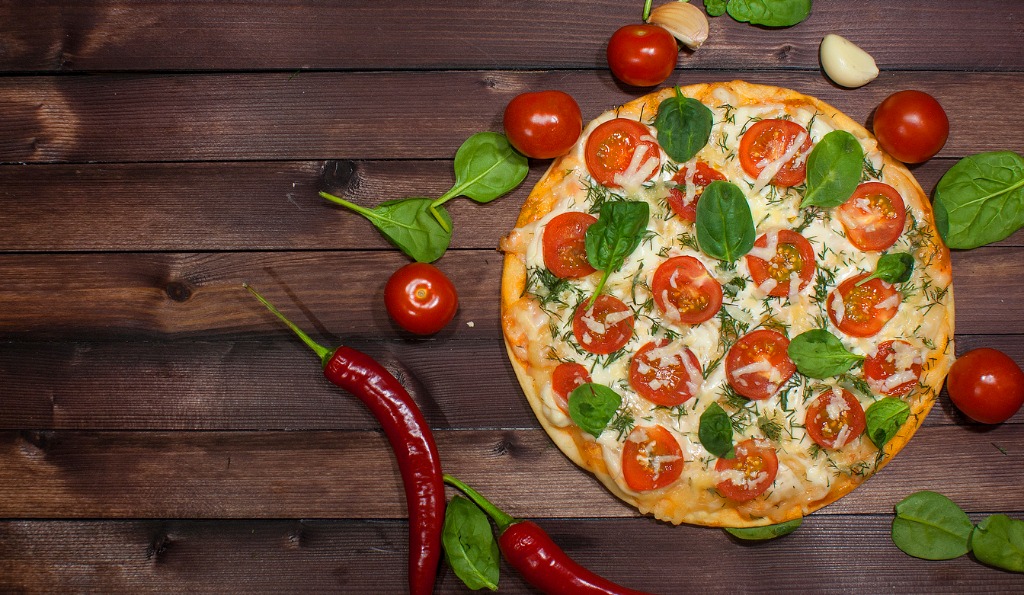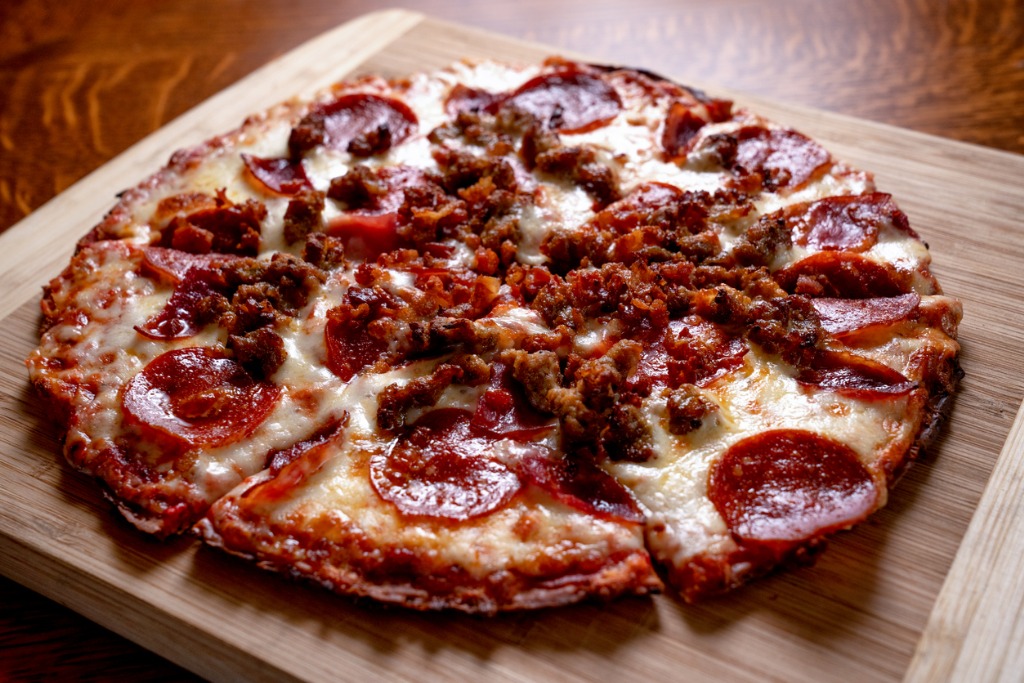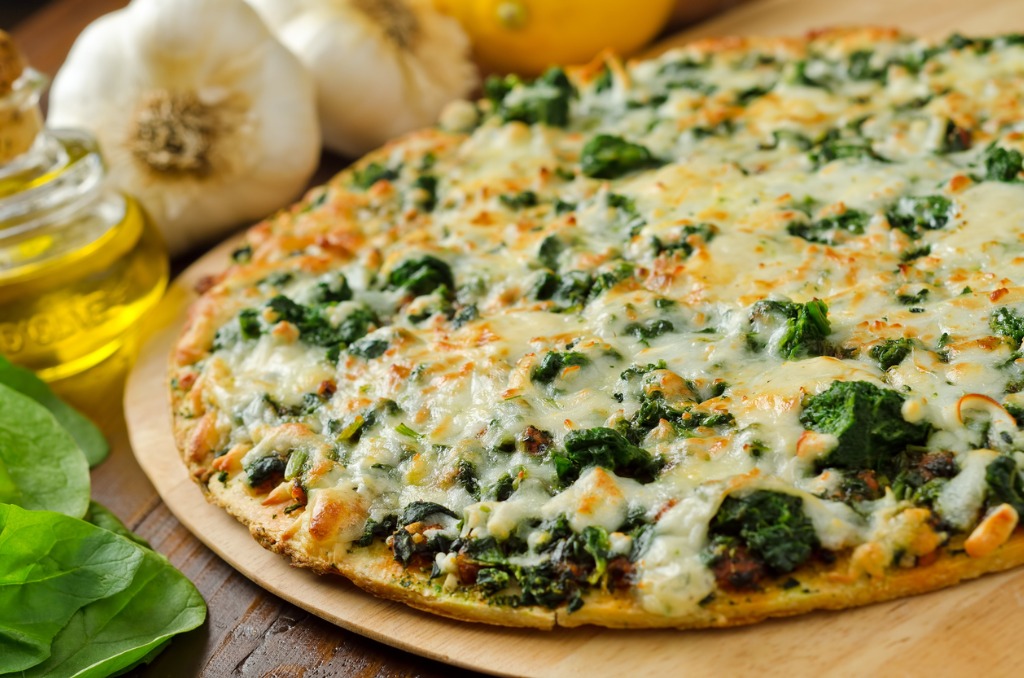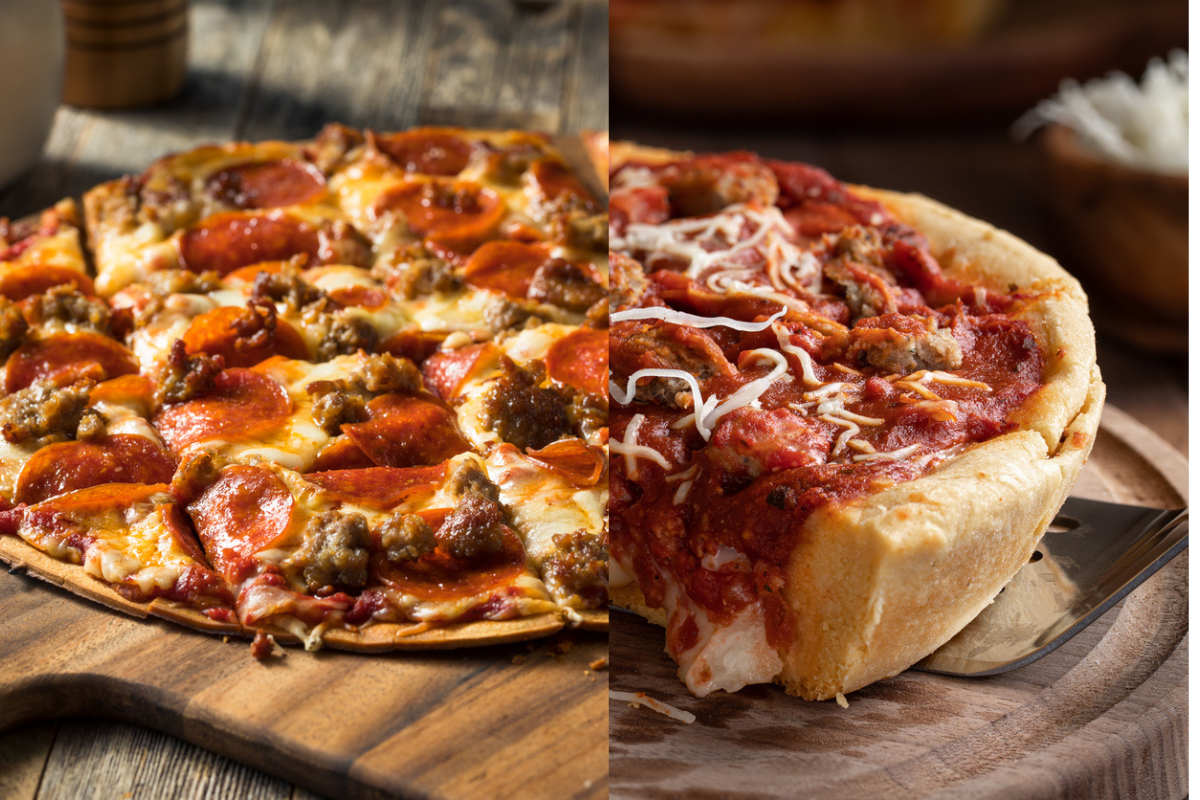Is Thin Crust Pizza Healthier for You?

Pizza is one of life’s greatest pleasures. Feeling down? Eat some pizza! Whether thin-crust frozen pizza is your favorite or you love enormous deep-dish Chicago-style pizza, a slice of pizza is sure to put a smile on your face and remind you that the earth truly is a magical place. We have yet to meet a human being that doesn’t love pizza.
However, pizza is by no means a superfood. It’s certainly not the healthiest food on the planet. It is an unfortunate truth, but honesty is one of Dogtown Pizza’s core values. Based on a poll we conducted, people tend to believe that thin-crust pizza is healthier than thick-crust pizza (we didn’t actually conduct a poll. This just seems to be the general consensus).
However, is this actually the case? Do you have to completely swear off pizza if you’re trying to lose weight, or is thin-crust pizza an effective alternative to “regular crust” pizza? Let’s take a look, shall we?
Thin Crust Pizza is Technically Healthier
Yes, you heard it here first, folks. Technically speaking, thin-crust pizza is healthier than thick-crust pizza! The thinner a pizza crust is, the fewer calories and carbohydrates it contains. Thin crust pizza also has less salt, less sodium, and less saturated fat. If you want to rejoice and celebrate by popping a thin-crust pizza in the oven right now, we completely understand.
However, there is one small caveat. This is only the case when comparing thin- and thick-crust pizzas that have identical toppings, sauces, and cheeses.
It Really Depends on the Toppings
 Your pizza’s toppings are more often than not the determining factor of whether or not your pizza is unhealthy. It doesn’t really matter how thin your crust is if you slather your pizza with thick layers of melted cheese, sugary tomato sauce, pepperoni slices, sausage, and bacon (all of which are extremely delicious, mind you).
Your pizza’s toppings are more often than not the determining factor of whether or not your pizza is unhealthy. It doesn’t really matter how thin your crust is if you slather your pizza with thick layers of melted cheese, sugary tomato sauce, pepperoni slices, sausage, and bacon (all of which are extremely delicious, mind you).
In fact, you could have a thin-crust pizza with a ton of toppings and a thick-crust pizza with just a little bit of cheese and some veggies, and the thick-crust pizza would be healthier and lower in calories. If health is your main concern, but you still want pizza, your best option is a thin-crust veggie pizza.
Portion Control Is Key
Those of us who have eaten an entire pizza that was meant for a family of four by ourselves can attest that we felt neither physically nor emotionally good afterwards. The best way to enjoy the pizza you love without sacrificing your health is to practice portion control. Moderation is critical. No matter what type of pizza or pizza toppings you choose, eating ten slices will push you into unhealthy territory very quickly, rendering crust thickness a moot point.W
Try pairing something healthy with your pizza to create a more balance meal. Love our meat lover’s pizza with extra cheese? Eat a slice or two and pair it with a salad!
Want Healthier Pizza? Load it Up with Extra Veggies
When comparing the healthiness of pizzas with differing crust thickness, the toppings and pizza sauce need to be exactly the same. If the pizzas have different toppings, the unhealthier toppings will skew the results.
For many people, pizza is perfect just the way it is, but if you want to make your pizza healthier, you can add some nutrient-packed vegetables on top! We have listed a few of our favorites below (along with their health benefits), but get creative and use what you have!
Sautéed Spinach
 Pizza may not be a superfood, but spinach certainly is. Everyone knows that spinach is good for the body. Spinach is loaded with fiber, vitamin A, vitamin K1, vitamin E, folic acid, iron, calcium, and multiple B vitamins. It also has a decent amount of protein for how few calories it has.
Pizza may not be a superfood, but spinach certainly is. Everyone knows that spinach is good for the body. Spinach is loaded with fiber, vitamin A, vitamin K1, vitamin E, folic acid, iron, calcium, and multiple B vitamins. It also has a decent amount of protein for how few calories it has.
You can, of course, add raw spinach to your pizza if you enjoy the taste. However, for those of you that aren’t exactly on board with raw spinach, we suggest sautéing it in a little bit of olive oil for about three minutes on medium heat and then adding it on top of your pizza! Spinach has a mild taste, so it works well with most other pizza toppings!
Roasted Garlic
Garlic is extremely good for you. It is low in calories and high in vitamin C, vitamin B6, and manganese. To be fair, simply throwing raw or even sautéed garlic on top of your pizza can be a bit overwhelming, so we suggest opting for roasted garlic. If you are a garlic fan and haven’t experienced the magic that is roasted garlic, it is a game-changer.
Roasting gives garlic a mild and almost sweet taste because it causes a chemical reaction that caramelizes the cloves. However, it takes about 40 minutes to roast garlic ,which isn’t exactly ideal if you’re looking for a fast weeknight meal. Luckily, you can keep roasted garlic for up to a week in the fridge. Just make sure you cover it with olive oil and seal it in an airtight container.
Roasting garlic is super easy, and the prep time takes less than 5 minutes. Preheat your oven to 400°F. Using a sharp knife, cut ¼ to ½ inch off the top of the bulb and place the bulb in a baking pan cut-side up. Drizzle each bulb with olive oil and cover each one with aluminum foil. Bake them for 35 minutes or until the cloves start to brown. Once roasted and cooled, remove the skins and enjoy the experience.
Sautéed Asparagus
Asparagus isn’t a popular pizza topping, but it is very delicious and packed with nutrients. Asparagus is rich in fiber, folate, vitamin A, vitamin C, vitamin E, and vitamin K. We suggest sautéing your asparagus in olive oil with a little bit of garlic.
This is super simple, and you can do it while your pizza is cooking. Heat olive oil in a pan over medium-high heat and then add your garlic and asparagus. Cover and let it cook for ten minutes. After your asparagus cools a bit, cut it up into 1-1/2 inch pieces and put it on top of your pizza!
Mushrooms
It almost seems as if mushrooms were created with the sole purpose of being a pizza topping. You can find them on our Veggie and Deluxe Pizzas, but adding some extra fungi can take your pizza’s nutrition value to the next level.
All types of edible mushrooms contain protein, fiber, vitamin B, and an antioxidant called selenium, which supports the immune system and prevents cell and tissue damage. White button mushrooms are actually one of the few non-animal sources of vitamin D. You can throw raw mushrooms on your pizza before you bake it or saute them in a little bit of olive oil first.
If you take a thin crust pizza and cover it in unhealthy toppings and compare it to a thick crust pizza loaded up with veggie toppings, then it probably won’t be the healthier option anymore! Healthy pizza consumption really boils down to the toppings you choose and portion control.
Next time you’re craving pizza, don’t order your regular meat lover’s, cheese-stuffed pizza from your favorite pizza chain. Try making a homemade pizza instead! You can make your own crust or buy a premade crust from your local supermarket. Heck, you could even try a cauliflower crust if you want to double-down on the healthiness! Experiment with different toppings like sun-dried tomatoes and artichokes and avoid sugary tomato sauces. You may be surprised by what you come up with!
Or, if you’re not in the mood for cooking or being creative, just pick up a Dogtown Veggie Pizza from your local St. Louis grocery store!
How do you practice healthy eating habits? What are your favorite healthy pizza toppings? Let us know in the comments below!





This Post Has 0 Comments